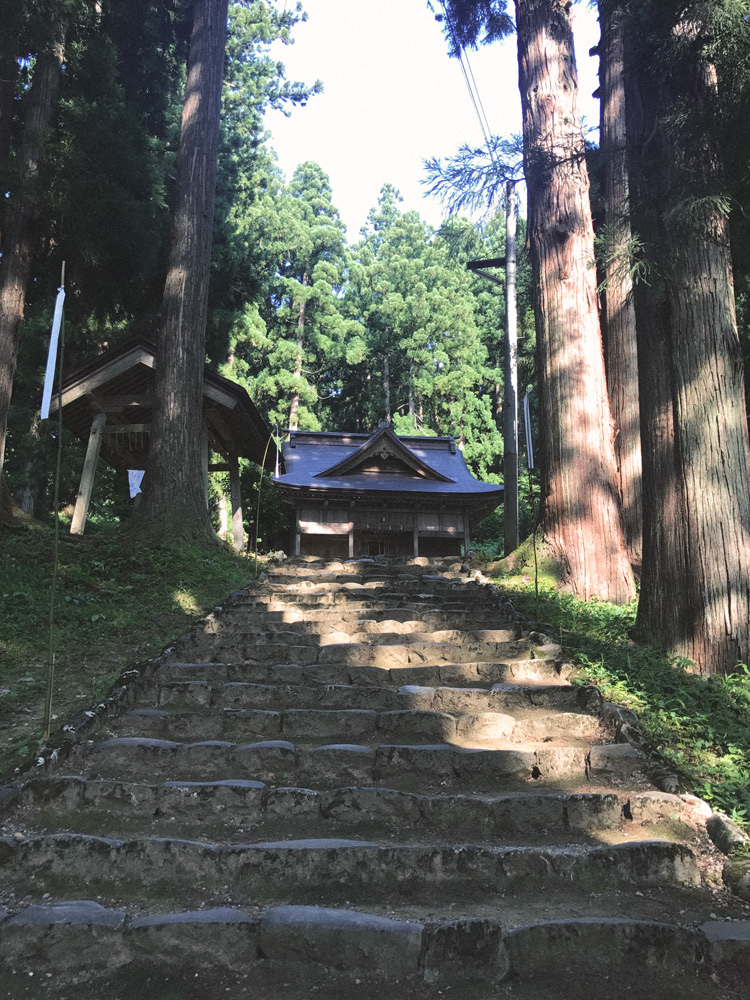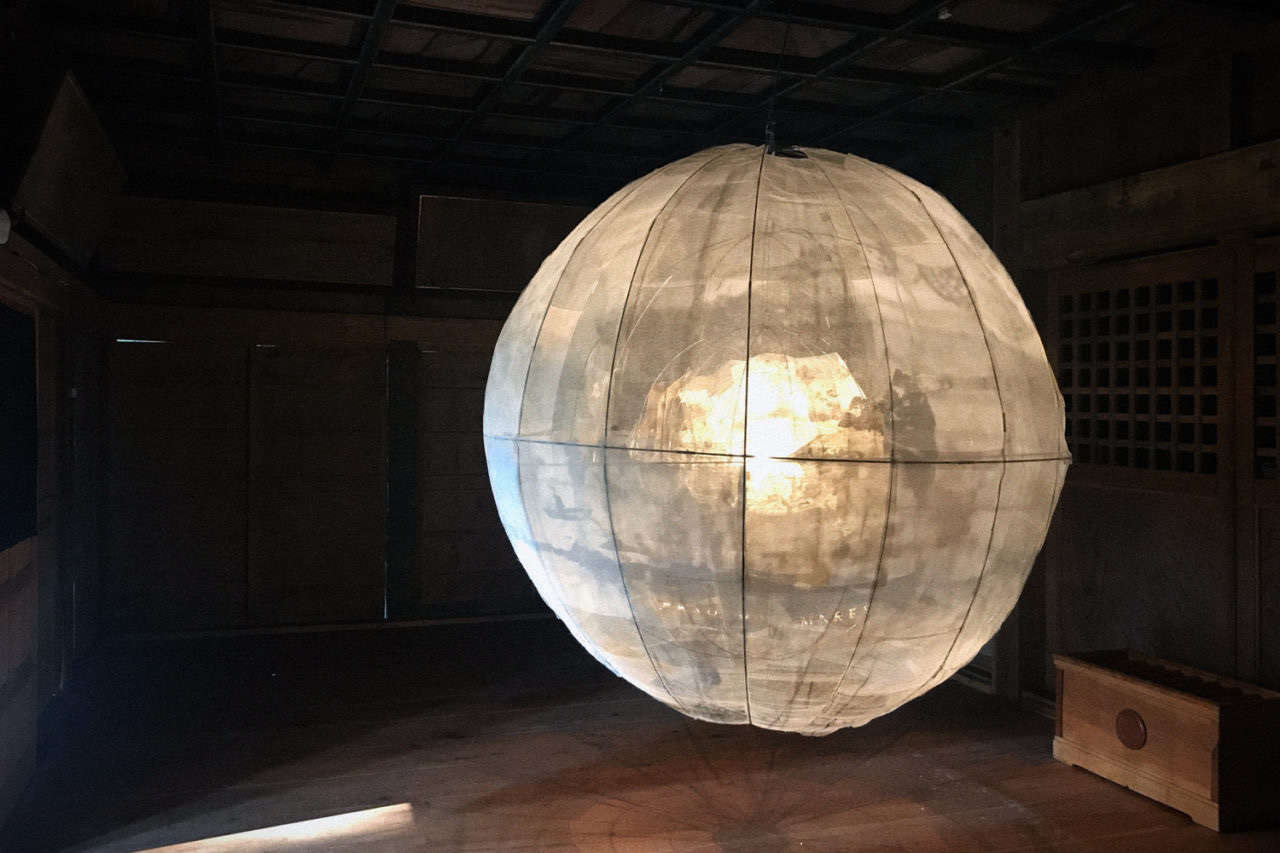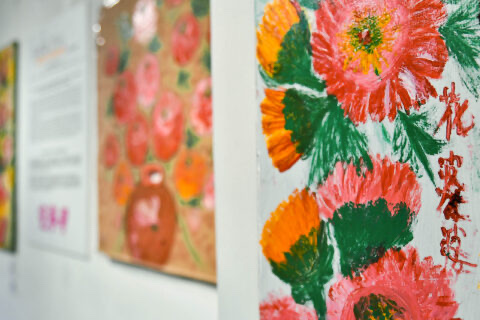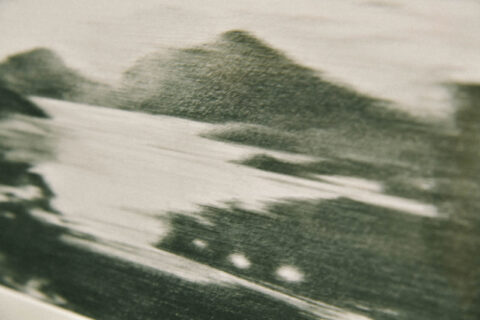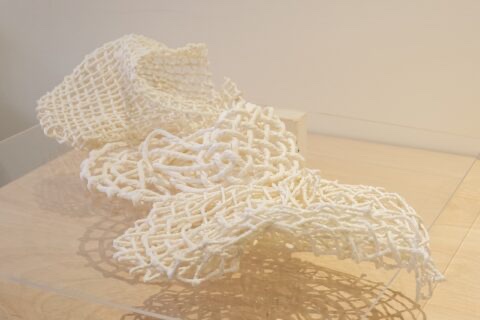日本新潟越後妻的枯木又村中有一片樹林,林中有一座三百年歷史的小古廟。這座為名Shrine of Koryu的寺廟用來供奉大地之神。在今年越後妻有三年大地藝術祭中,古廟首次化成藝術品的展視場地。智利出生現居法國的藝術家Emma Malig的作品《Atlas-Lamenti》,是三百年來首次獲得當地居民同意,將廟內神像、神壇清空讓作品展視其中。《Atlas-Lamenti》是一組發光的地球型裝置。轉動地球,訴說著這位因政變而曾經逃往日本,並在那裡學習的拉丁美洲裔藝術家的流亡哀歌,也和應著這個雪國之地曾是日本武士們避難之所的傳說。
日本西北部的新潟冬天可長六個月,積雪達六、七尺,那裡有著名信濃川及高山。高山樹林就是昔日武士們冬天時藏身隱秘之地,因為雪厚一般人都難以到達,他們可以安心在這裡過冬。日本人信奉自然界各種神靈,在森林樹木旁必有寺廟,Emma Malig的《Atlas-Lamenti》就是展視在樹林中的Shrine of Koryu。Malig曾經在京都居住並學習和紙的製法,《Atlas-Lamenti》是以和紙技術造成轉動的地球型裝置。寺廟內『地球』在緩緩的轉動,加上燈光影照下會見到數艘小船、島及舊地圖的剪影,它們徐徐在跟著轉動。的確為著不同的原因,這地球上每分秒也有著人的流動及遷徒,從一處到另一處,這變動是恆常的。地殼亦以我們不曾察覺的速度在移動,地圖表面的分佈因此在不知不覺當中改變。
Malig的作品思考人類的移居狀態,她藉著自己曾經流亡海外有家歸不得的遭遇的背景,反思當下的各種難民問題 。有人說在很多很多年以前,地圖上只有一片偌大的陸地沒有洲國之分,推說下去人類都是不分你我來自同一大地。駐足觀看Malig這個發亮的地球,會隱隱聽見聲音,它像是有人走過木板地發出的聲響;又像是推開大門的聲音,聽著會覺得有一聲「我回來了」跟隨推開大門的聲音。人與人之間及人與大地之間的關係,正是越後妻有三年大地藝術祭初衷。將發光地球放到Shrine of Koryu中,於是人類在大地之神的懷抱下成為一體。
In Echigo Tsumari in Niigata, Japan, there is a village called Karekimata. In the woods of Karekimata stands a small 300-year-old Shrine of Koryu that worships the god of the earth. The shrine is for the first time used as an exhibition venue in this year’s Echigo-Tsumari Art Field Triennale. The artwork entitled “Atlas-Lamenti” by Emma Malig, the Chile-born French artist that had the locals’ first approval in 300 years to clear away all the statues and altar to give room for the exhibition of the artwork. There had been no other artists, prior to Malig, who had succeeded in getting approval from the locals. “Atlas-Lamenti” is an illuminated globe-shaped installation that reflects the misery of the Latin American artist who fled from a coup d’etat to Japan to live and to learn. The work as well responds to the legend that claims this snowy village used to be a refuge for the Japanese samurai.
Niigata is a prefecture located in the northwest of Japan. Its winter can last as long as 6 months and receive around six to seven feet of snow. The prefecture is also home to the famous Shinano River and Takayama. The woods in Takayama is rather inaccessible during winter because of the snow, which made it an ideal place in the old days for the samurai to seek cover. The Japanese worship many nature deities, therefore, shrines can always be found next to the woods and forests, with the Shrine of Koryu which hosts Malig’s “Atlas-Lamenti” being one of them. Malig once resided in Kyoto to learn the skills of making washi, the traditional Japanese paper. The spinning globe installation “Atlas-Lamenti” itself was also made of washi. When the globe spins slowly in the shrine, viewers can see under the lights silhouette of a few boats, island and ancient map that rotate with the globe. There are always people who migrate or go to a foreign land for their own reasons, such movement is constant and will never end. Similarly, the earth crust is also shifting at a pace that is too slow to be recognized, which leads to a change in the map before we become aware of it.
Malig’s work delves into the question of human migration. Through her personal experience of fleeing her homeland, she tries to explore the current situation of the refugees. It was said that our world was once a massive piece of connected land that was not separated by sea or country borders, therefore, everyone should have the same origin. Standing in front of Malig’s illuminated globe, viewers can hear some faint sound that resembles steps on a wooden floor or the creaking sound as a door opens. Everything makes people anticipate a voice saying “I’m home”. The Echigo-Tsumari Art Field focuses on exploring the relationship between people as well as the connection between human and Mother Nature. Placing this illuminated globe in the Shrine of Koryu allows people to be embraced by the god of the earth, so that we become one again.

